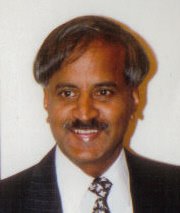Aesthetics in Dance
Sripriya Vijay, a disciple from the Dhananjayans’ school of Bharatha Natyam gave a presentation on “Music in Dance’ on September 30, 2007 at the Museum of History in Raleigh touching on the nuances of Carnatic music playing an integral role in Bharatha Natyam. She is a dance teacher in the RTP area following the “MArgam format” propounded by the Tanjore Quartet of yore. She traced the origin and history of Carnatic music and its prominent role in Bharatha Natyam. Her description of music being the soul and dance being the body was very fitting. She described the various terms used in Carnatic music in explicit detail.
She is passionate about the art and it shows in her dedication to the details. She described the composition and classification of various rAgams (scales consisting of various notes or swarAs in some specific order) that constitute the 72 mELakarthA rAgams and the variety of permutation/combination of the swarAs to generate an infinite number of rAgams. The various rAgams can also be described as major, medium, and minor as they lend themselves to describe the various emotions and the elaboration of the content of the lyrics. She also went into various details in handling each rAgam and the application of proper rhythm with which they would integrate. Additionally in Carnatic music the lyrics play a prominent role and the meaning of the lyrics (mostly expressing qualities of divinity and devotion) expresses the devotion soaked in emotion which is the cornerstone of Carnatic music.
The origin (and antiquity) of Bharata Natyam has an interesting story behind it. The celestials, it seems, were concerned about the decadence of humanity and tried to rectify the situation. They approached Brahma and requested him to simplify the Vedas so that the humankind can follow the code of conduct prescribed for them. Brahma then distilled the essence of the four Vedas, taking some aspect of each one and created a fifth Veda. He wanted this Veda to be spread among humanity not through text but through a performing art. He entrusted that task to a sage called Bharata Muni, who wrote up the rules for the dance in his text known as NAtyasAstra and taught them to heavenly damsels and a hundred of his disciples. The performing art incorporated the elements of drama and dance and was called Bharata Natyam.
The Bharata Natyam dancer's repertoire is extensive. Both from literary and sculptural evidence, it is made obvious that the dance was performed both as a solo item and also in groups. However, the present form of Bharata Natyam crystallized as a solo dance style about the 19th century. The scope of the performance, as delineated by the four brothers of the Thanjavur Quartet (called MArgam format), is pretty much adhered to by the performers of Bharata Natyam today, especially during Arangetrams (debut performances), although new numbers are constantly added to the repertoire. The repertoire of Bharata Natyam is extensive but we generally see Alarippu (invocation in pure dance form), Jatiswaram (pure dance set to music but no song), Shabdam (interpretative dance with music and song), Varnam (presenting the cream of the dance art), Padams and JAvaLis (lyrical devotional songs for intensive abhinayam exposition), and Thillana (a sprightly item with brisk rhythms and movement).
Carnatic music and Western classical music share the common themes of melody and rhythm and while Carnatic music relies on prosody or lyrics (sAhityam) for emotive purposes, Western music emphasizes harmony. Sripriya delineated the various components of Carnatic music including melody (sruthi), rhythm (layam), and lyrics which make up the music in toto. She wants everybody to “see the music and hear the dance” and to do that, she emphasized, music has to play a prominent role in dance.
Sripriya invited two of her students to demonstrate two items—a shabdham (madhurAshtakam by the 14th century composer St. VallabhAcAryA) describing the beauty of Lord Krishna. Every part of Krishna’s body such as lips, face, eyes, heart, form, and his song is nectar. The student (Deepti Shroff) danced to the vocal music of the late M. S. Subbulakshmi. The second item was a thillana danced by a student (Divya Rao)—a composition of a contemporary composer Lalgudi Jayaraman in the rAgam mOhankalyANi.
Labels: Bharathanatyam, Carnatic Music, Krishna, Margam format


